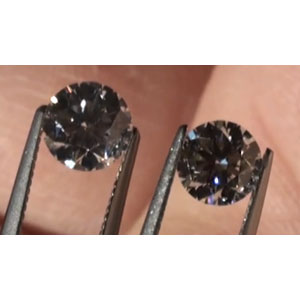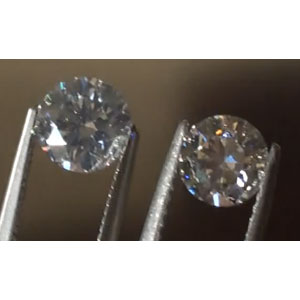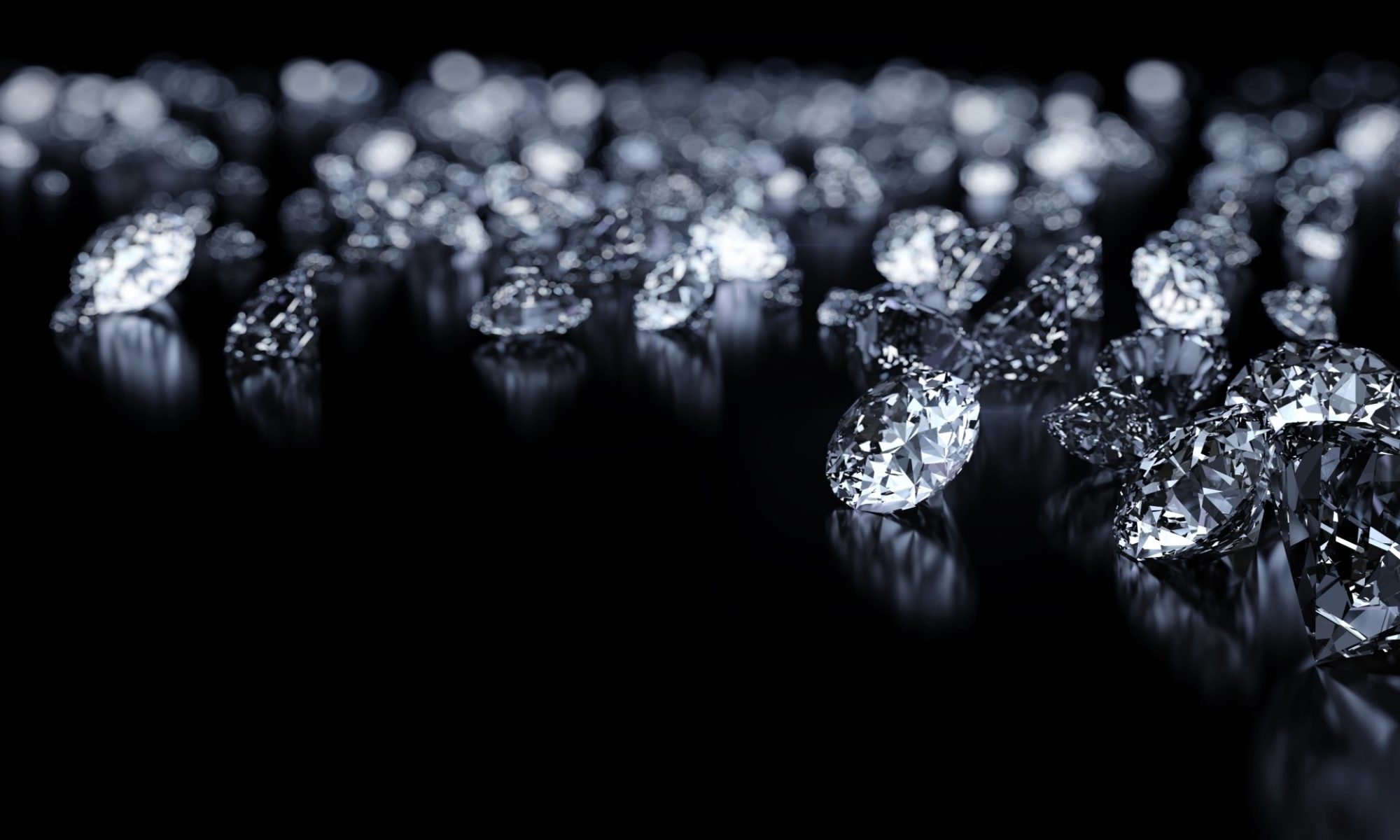Fluorescence
Fluorescence is the glow that can be seen when the diamond is viewed under a black (UV) light and is caused by boron impurities that occur due to defects in the diamond’s crystal structure.
Most type-1a diamonds that fluoresce do so with a bluish glow, although it is possible that a diamond fluoresces with a different color such as yellow or white. One important thing consumers should be aware of is that fluorescence is described rather than graded so it can be highly subjective.
Fluorescence on a lab report can be described as the following:
- None/Negligible
- Faint
- Medium
- Strong
- Very Strong

The Appearance of Fluorescence
Fluorescence can be confusing because you are likely to hear seemingly conflicting opinions regarding whether fluorescence is beneficial or detrimental. This tutorial is designed to help you decide whether you should consider purchasing a diamond with fluorescence.
The first thing you need to decide is whether you like the effect of fluorescence under a UV light, that is the typical blue glow. In this regard, you should probably know that when a grader describes fluorescence, the diamond is very close to the UV light.
The chance of you seeing the same degree of bluish glow, as the grader saw, in real life is very unlikely. Appraisers come accross just as many, if not more people who are disappointed with their stone’s lack of fluorescence than those who are disappointed that their stone has a bluish glow.
Apart from the bluish glow, which can be a positive for some, fluorescence can have the negative effect of making the diamond appear oily/milky/hazy in natural daylight. This is because sunlight is a strong UV source.
Note that all diamonds go darker in direct sunlight but the fluorescence can cause the diamond to appear more dull.


The problem comes from the fact that most light sources emit a small amount of UV. In strong to very strong fluorescent diamonds, even this small amount can cause a visible effect.
Having understood a little bit about how fluorescence works, it is not difficult to understand that the stronger the fluorescence is in the diamond, the more likely you are going to see the effect of fluorescence under normal lighting. Unfortunately (or fortunately depending on where your preferences are at), this isn’t the entire story because for some unknown reason, not all strongly fluorescent diamonds demonstrate the negative effects.
The GIA has done a study that showed approximately 20% of diamonds with strong to very strong fluorescence exhibit this oily/milkiness/haziness look. They also report that less than 0.2% of diamonds submitted to them have this effect.
This suggests that roughly 1 in 100 diamonds submitted is a diamond that displays strong or very strong fluorescence. You can decide whether you want to believe in these numbers yourself.
The only advice that can be given to you is to remember that diamonds are priced very competitively and on an open market. So if you come across a diamond with very strong fluorescence and it seems to be priced too good to be true, then chances are something is wrong with it and you would avoid purchasing it.
If your preference is for a strong bluish glow but also want to avoid the negative effects, then you really have to inspect the diamond before you purchase. There are vendors who market a range of ‘blue’ diamonds that they will guarantee has no negative effect caused by fluorescence.
How Fluorescence affects Diamond Color
What is often said is that the blue light that is emitted by fluorescent diamonds cancels out some of the yellow light that is coming off of a diamond that has a yellow tint, thus making it appear as a whiter, higher color.
Blue and yellow are polar opposite colors so when white light is shone on a blue absorbing material such as diamond, our eyes see yellow. Also, when invisible UV light is shone on a blue emitting material such as a fluorescent D-color diamond, our eyes see blue. This happens because when a material absorbs a wavelength of light of a certain color it’s like subtracting that color from white light. Conversely, when a material emits colored light it’s like adding that color.
The following equation describes what happens when invisible UV light is shone onto a fluorescent and yellow-tinted diamond:
White – Blue + Invisible + Blue = White + Invisible = White.
Here’s a more complicated version of the same thing:
White – Blue = (Red + Green + Blue) – Blue = Red + Green = Yellow
Invisible + Blue = Blue
(White – Blue) + (Invisible + Blue) = Yellow + Blue = Red + Green + Blue = White.
Fluorescence generally affects the entire diamond so the beneficial effect of fluorescence to improve daylight body color is more evident in lower color grades such as J or below where the body color is more obvious throughout the diamond.
How Fluorescence affects Diamond Prices
Fluorescent diamonds, even when there are no detrimental effects, are usually discounted by around 15-20%. But when fluorescence is seen as beneficial, there are some markets where the fluorescence won’t be discounted or even sell at a premium.
There is one further point that should be mentioned. Because of the market pricing, it is known that the demand for fluorescent diamonds in high-color grades is weaker than those that do not exhibit fluorescence.
This means that a fluorescent diamond will take longer to sell and you will probably end up recouping less of your original value than a diamond without fluorescence. Bear this in mind if you ever plan on upgrading and make sure you have a decent upgrade policy with the vendor you go with.
Conclusion
At the end of the day, whether you like fluorescence or not is a personal matter. Some people personally think it’s a cool effect. Today’s diamond market tells us that fluorescence is seen as a defect, just like an inclusion or imperfect symmetry. But history has told us that society’s preferences for fluorescence has changed at least once in the past, so it’s possible that one day it may yet change again.
